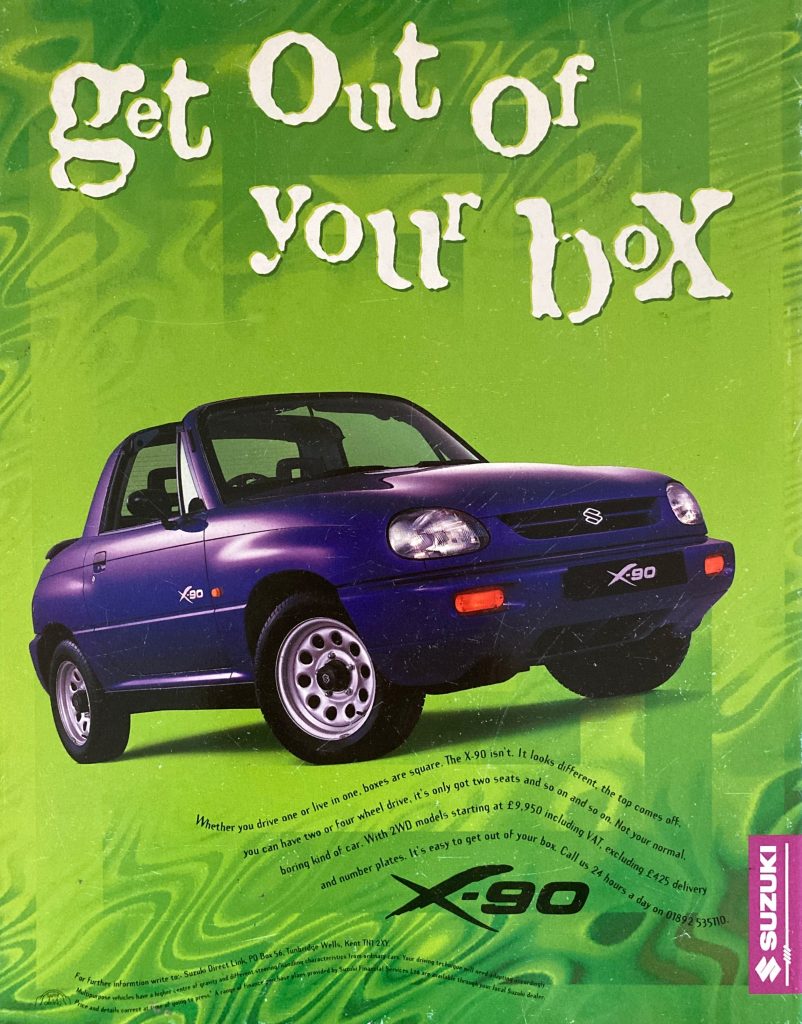Car enthusiasts are a fickle bunch. In one breath they’ll complain how all cars look the same, then in the next deride any manufacturer that dares to do something different. What most people actually mean, we think, is that carmakers should build more cars that suit that individual enthusiast, and hang the idea that they might be the only customer for it.
In the 1990s, one car that dared to do something different – and faced the wrath of car enthusiasts for it – was the Suzuki X-90. It is a regular on lazy “worst car” lists, and even received ire from Andrew Frankel on this very site, who reminisced on creating a special X-90 class in one of Autocar magazine’s top-ten rundowns and ranking it eleventh.

Frankel did get one thing wrong in that he said there was no four-wheel drive option. There was, alongside a cheaper rear-wheel drive model. We’re not sure which is more unusual, given not many off-roaders are targa-topped two-seaters, while not many rear-wheel drive two-seaters look like mud-pluggers.
Clarkson reviewed one on Top Gear back in the day, too, and while it hardly came away with a glowing review, it wasn’t quite the character assassination you might expect, either. Other than an amusing segment where he interviews a toddler about designing the car, he concedes that it drives better than most 4x4s at the time, and there’s even a segment demonstrating that it’s adept at some light off-roading.
It’s fair to say reviews tended toward the negative, though now defunct magazine Complete Car did test the X-90 against a two-door Toyota RAV4 in July 1996, and gave the Suzuki the win. The mag lauded Suzuki for coming up with something genuinely new, for its lift-out roof panels, and its ability off road. Only the noisy 1.6-litre engine and a slightly bouncy ride came in for any real criticism.

Suzuki’s advertising, like this print ad from 1996, played heavily on the shape, noting that most other 4x4s at the time were somewhat boxy. That included the X-90’s sibling, the Suzuki Vitara (the two sharing running gear and underpinnings), but think back to the mid-90s and off-roaders with curves were certainly in a minority.
The X-90 was not a strong seller, but the few that remain on the roads today are being snaffled up by mostly young enthusiasts, few of whom care how the car might have been perceived by reviewers a quarter of a century ago but appreciate it in a modern context, where it’s rare without being priced to match, capable without being unwieldy, and has a sense of humour missing from… well, most cars, actually. You could never accuse the X-90 of taking itself too seriously.
You could argue that style-led off-roaders like the X-90 were the beginning of the end, leading to today’s proliferation of tall hatchbacks and the death of nearly every segment they compete against. But we reckon the X-90 is at least innocent of that, even if it was never that great a car. Just how many two-seat, targa-topped off-roaders can you buy today?








